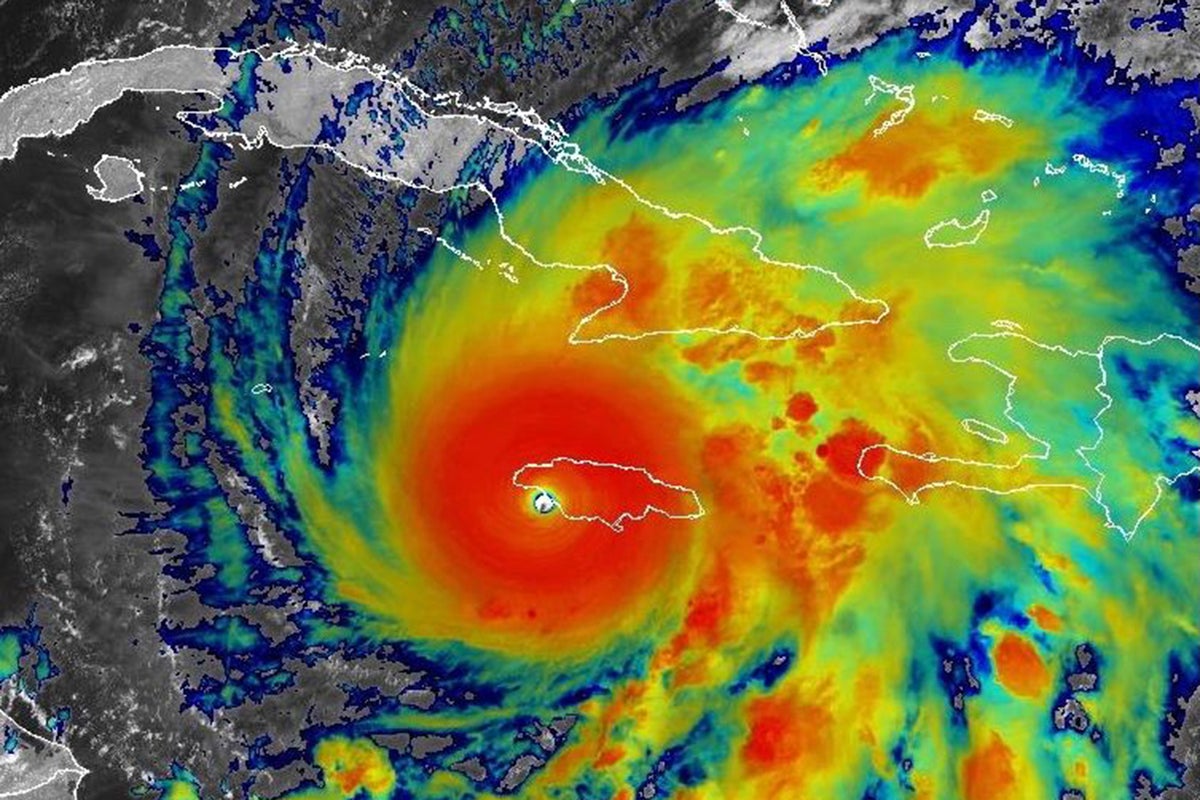
Hurricane Melissa has hit eastern Cuba with devastating winds of 120mph hours after leaving a trail of destruction in Jamaica.
The “storm of the century” is one of the most powerful in Atlantic history, and the most forceful Hurricane to ever hit Jamaica.
Melissa began as a tropical wave near West Africa, before gaining traction and blowing westward to the Caribbean. After passing over Jamaica, it made landfall in Cuba on Wednesday. It is expected to crawl across the country with destructive winds and torrential rainfall before passing over to Bermuda and the Bahamas.
Surrounding areas, including the southeastern and Central Bahamas and Turks and Caicos, could also suffer a “life-threatening storm surge” and heavy rainfall, the National Hurricane Centre said.
Red Cross teams have been mobilising as Melissa continue its trajectory across Cuba, Dominican Republic and Haiti.
Its slow pace makes Melissa deadlier, with sustained winds and accumulated rainfall inflicting maximum damage to the vulnerable and low-lying island. Around 70 per cent of Jamaica’s population of over 2.8 million people lives in coastal areas.
“Slow-moving major hurricanes often go down in history as some of the deadliest and most destructive storms on record,” said AccuWeather chief meteorologist Jonathan Porter. “This is a dire situation unfolding in slow motion.”
Cuban President Miguel Díaz-Canel ordered mass evacuations across the country with at least 735,000 people being forced to leave their homes to escape the devastation. The National Hurricane Centre warned Melissa will inflict a “life-threatening storm surge, flash flooding and landslides”.
In the Bahamas, next after Cuba in Melissa’s path to the northeast, the government ordered evacuations of residents in southern portions of that archipelago.
At least seven people have already died, including three in Jamaica, three in Haiti and one in the Dominican Republic. One person remains missing.
“Early indications are that Hurricane Melissa was a disaster of unprecedented catastrophe for the island,” Alexander Pendry, the charity’s global response manager said on Wednesday. “News is already coming through that whole communities are under water and that the damage left by the strong winds has been devastating.”
Jamaican Prime Minister Andrew Holness said the country is “expecting that there would be some loss of life” in the aftermath of the event. United Cajun Navy vice-president Brian Trascher estimated that “trillions of gallons of water” would fall on Jamaica.
“The reports that we have had so far would include damage to hospitals, significant damage to residential property, housing and commercial property as well, and damage to our road infrastructure,” Holness said. “Our country has been ravaged by Hurricane Melissa but we will rebuild and we will do so even better than before.
More than 500,000 residents have been left without power, with the parish of St. Elizabeth In southwestern Jamaica left completely “underwater,” an official said.
Video of the airport in Montego Bay showed inundated seating areas, broken glass and collapsed ceilings.
Meteorologists at AccuWeather said Melissa ranked as the third most intense hurricane observed in the Caribbean, after Wilma in 2005 and Gilbert in 1988 – the last major storm to make landfall in Jamaica.
